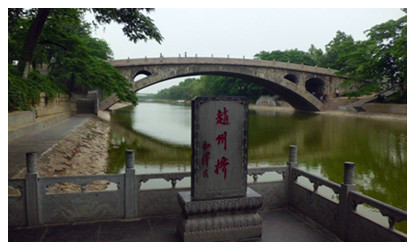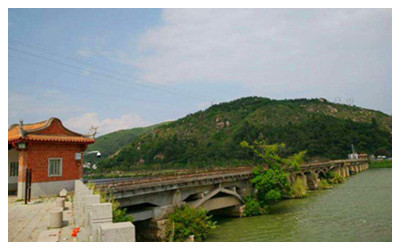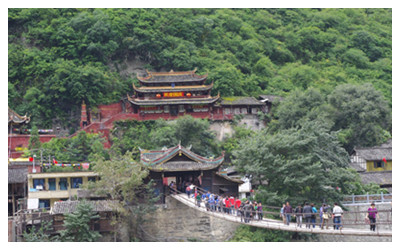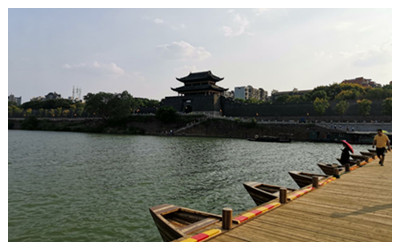China is a great country with a written history of about 5000 years. She has a vast territory, topographically higher in the northwest and lower in the southeast. Networked with rivers, she has the best-known valleys of the Yangtze River, the Yellow River and the Pearl River, which are the cradle of the Chinese nation and her brilliant culture. Throughout history, the Chinese nation has erected thousands of bridges, which form an important part of her culture.
Ancient Chinese bridges are universally acknowledged and have enjoyed high prestige in the bridge history of both the East and the West. Ancient Chinese bridges can be classified under four categories: the beam, arch, cable suspension and floating bridges.
Arch Bridges

There are different views on the origin of arches. However, a study of the tombs and the extant old arches in China indicates that the joint of the beam and sides evolved gradually into isometric trilateral, pentalateral and septilateral arches and finally into semicircular arch. The span, too, was gradually elongated, from 2m or 3m up to 37.02m (clear span). And it has kept the world record for more than a thousand years.
The oldest arch bridge in China, which is still surviving and well-preserved, is the
Anji Bridge, also known as the Zhaozhou Bridge, at Zhouxian, Hebei Province, built in the Sui Dynasty . The
Lugou Bridge across the Youngding River is located at Wanping County, 30 li away from Guanganmen, Beijing.
 Beam Bridges
Beam Bridges
The earliest reference to the beam bridge in Chinese history is the Ju Bridge dating from the Shang Dynasty (16th-11th century B.C.). King Wu of the Zhou Dynasty launched a campaign against King Zhou (Zhou Wang), and having captured Zhaoge -capital of the Shang Dynasty (now northeast to Quzhou County, Hebei Province), at the J
u Bridge, he ordered a hoard of millet distributed to the relief of the poor. From the Zhou Dynasty through to the Qin and Han Dynasties, bridges with timber beams and stone piers were predominant.
The
Jiangdong Bridge in Zhangzhou, Fujian Province boasts the largest stone beams. In the first year of the reign of Jiaxi (A.D. 1237) of the Song Dynasty, the timber beams of this bridge were replaced by stone ones.
 Cable Suspension Bridges
Cable Suspension Bridges
Cable suspension bridges vary in kind according to the material of which the cables are made: rattan, bamboo, leather and iron chain. According to historical records, 285 B.C. saw the zha bridge (bamboo cable bridge). Li Bin of the Qin State, who guarded Shu (256 -251 B.C.), superintended the establishment of 7 bridges in Gaizhou (now Chengdu, Sichuan Province), one of which was built of bamboo cables.
The
Luding Iron-chain Bridge in Sichuan Province, the most exquisite of the extant bridges of the same type, spans the Dadu River and has served as an important link between Sichuan Province and Tibet.
 Floating Bridges
Ganzhou Ancient Pontoon Bridge
Floating Bridges
Ganzhou Ancient Pontoon Bridge is a kind of Floating Bridges which is located on Zhangshui River in front of the Jianchun Gate in Ganzhou Ancient City. It was built by the Ganzhou former commander Hong Mai in Emperor Qiandao Period (1163-1173) druing the
Song Dynasty. With over 800 years history, the pontoon bridge is about 400 meters long and is made up of more than 100 small boat boards connected by cables. In ancient times, the bridge was regularly opened every day for the passage of commercial ships.

 There are different views on the origin of arches. However, a study of the tombs and the extant old arches in China indicates that the joint of the beam and sides evolved gradually into isometric trilateral, pentalateral and septilateral arches and finally into semicircular arch. The span, too, was gradually elongated, from 2m or 3m up to 37.02m (clear span). And it has kept the world record for more than a thousand years.
There are different views on the origin of arches. However, a study of the tombs and the extant old arches in China indicates that the joint of the beam and sides evolved gradually into isometric trilateral, pentalateral and septilateral arches and finally into semicircular arch. The span, too, was gradually elongated, from 2m or 3m up to 37.02m (clear span). And it has kept the world record for more than a thousand years. Beam Bridges
Beam Bridges  Cable Suspension Bridges
Cable Suspension Bridges  Floating Bridges
Floating Bridges  Ask Questions ?
Ask Questions ?